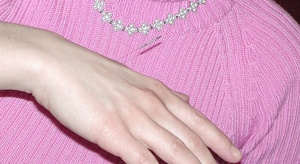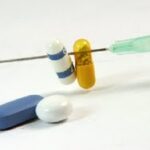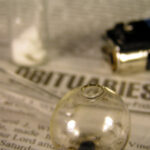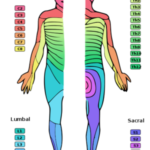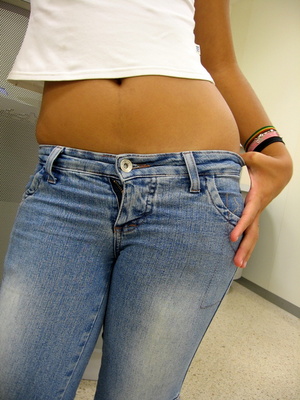RSD (Reflex Sympathetic Dystrophy), recently more commonly known as CRPS (Complex Regional Pain Syndrome), is a neurological condition which causes significant pain, swelling, discoloration, temperature changes, sensitivity, and myriad other symptoms to a limb of the body. This extremely painful condition typically manifests itself following an extreme disruption to the limb, most commonly after injury or surgery. The condition is considered to be chronic, and it can be extremely resistant to conventional treatment. For this reason, patients and physicians alike are more and more commonly seeking out non-conventional treatments, like acupuncture, to attempt to address this obstinate, excruciating condition.
RSD / CRPS is especially hard to treat because it manifests itself in almost every level of the physical make up of the limb. As an aggressive neurological condition, the skin, muscles, joints and bones of the limb are affected. The limb will often swell, will change in color to look bruised, the skin will become sensitive to touch, and the internal muscles, bones, and joints will ache severely and often exhibit a sharp painful experience upon pressure to the affected limb. Many sufferers of RSD / CRPS are incapacitated by the condition. They may be unable to weight bare, and yet experience severe pain when resting the limb on even the gentlest surface, like a blanket or pillow, due to the sensitivity of the skin.
Acupuncture is, in recent years, becoming a very popular treatment for RSD / CRPS. Because acupuncture addresses the body’s response to an adverse event in the body it can be particularly effective in addressing conditions for which conventional, western treatments are ineffective. Acupuncture can be utilized even when the source of a pain syndrome is unknown. For a condition as perplexing and intractable as RSD / CRPS, the utilization of acupuncture can be extremely effective.
What is acupuncture?
Acupuncture is a form of Traditional Chinese Medicine (TCM) that was developed in China at least 3,000 years ago, and may date back as many as 5,000 years. A word made up of the roots “acus” meaning needle, and “puncture” meaning the piercing of the skin, acupuncture literally translates to “puncture with needles.” By placing hair-fine needles into the skin at strategic points in the body known as “acupuncture points,” acupuncture can help to promote healing, alleviate pain, calm spasms and ticking, bolster the immune system, and generally encourage good health in myriad ways.
The focus of acupuncture treatment is the “qi” (pronounced “chee”) or the life energy of the body. It is the belief of practitioners of Traditional Chinese Medicine that the qi is flowing though every living thing, and that it is what allows life to occur. Qi flows through the body through channels known as meridians. There are twelve major meridians of the body (and several minor meridians), which are associated with twelve major organ systems of the body. These are the lung, the large intestine, the stomach, the spleen, the heart, the small intestine, the bladder, the kidney, the pericardium, the san jiao (recognized as an organ only in TCM, and is considered to be a heat source of the body), the gall bladder, and the liver meridians. It is through these meridians that the qi flows, promoting life and well being, and affecting the quality of the physical, mental, spiritual, and emotional health.
It is believed that when the qi is out of balance, blocked, or stagnated, illness and pain result. Pain and illness can also cause the imbalance of the qi, as the chicken and the egg are interconnected, and one will always come first. The process of acupuncture, of the placing of needles into the acupuncture points (which fall along the meridians) corresponding with the location of the disharmony of the qi will restore the qi to balance and allow it to flow freely again, thereby alleviating the symptomatic problems.
Aside from the needling of acupuncture, there are other devices the acupuncturist may use to help restore the quality of the qi and return the body’s systems to order. The application of specific herbs, which are heated and smolder above the appropriate acupuncture points, known as moxibusion, sends warmth down into the points. Cupping is the placement of small glass cups on the skin of the back. The air inside the cups is either filled with hot smoke, which causes the skin under the cups to be drawn up into the body of the cup as the air inside cools, or a suction gun is attached to the outside of the cup which suctions the air out. This suctioning of the skin can draw toxins from the body and promote healing and balance. Similarly the application of a small amount of electrical current to the end of the acupuncture needle, at high or low frequency, sends an the current down into the point, providing the point with added stimulus.
What does a patient experience during an acupuncture session?
The acupuncturist will examine the patient first and take a comprehensive medical history. Some of the examination is unique to acupuncture and may seem odd to the patient. For instance, the acupuncturist will take the patient’s pulse, but in doing so, he or she will generally take it three times, and will alternate which fingers he or she is using to read the pulse. The patient’s tongue will also be examined, as deficiencies of the vital organs and depletions of qi are evident in the shape, texture, and color of the tongue.
After the examination, the patient will lie down on a massage table, either prone or supine, and the acupuncturist will place some needles in the body. The number and location of the needle sites will vary patient-to-patient, and often visit-to-visit, depending on the needs of the patient at that point. Needles may be placed in the part of the body that is causing the patient trouble, or they may be inserted into locations nowhere near the source of the pain or problem.
For most, acupuncture treatments are completely painless. The needles are very fine (the average diameter of an acupuncture needle is 0.015″), and they are solid. What many patients don’t realize is that most of the pain that they have experienced due to needle insertion in the medical setting is caused by the hole in the center of the blood draw or injection needle, which allows fluid to be either drawn or injected through the shaft of the needle. This hole causes there to be some resistance as the needle is inserted, which pulls on the skin and causes most of the sting that the patient feels. Due to the solid and tiny nature of the needles, acupuncture needles can be inserted into the outer layers of the skin with no or very little discomfort.
Occasionally, if there is a high concentration of qi blocked around a particular point, the patient may experience a small twinge of pain, similar in feeling to a bug bite, and this feeling will typically subside as the treatment continues and the blockage begins to resolve.
Once the needles are in place, the patient will lie quietly in a dim room, generally with soft, non-lyrical, music playing, for anywhere from ten to thirty minutes, depending on the current need of the patient.
Is acupuncture safe?
There are few negative side effects to the use of acupuncture. The most common adverse affects include bruising or slight swelling around the needle site, or soreness. Occasionally, due the relaxing nature of the procedure and the calming affect of acupuncture on the energy of the body, patients may report a slightly sedated feeling, and in rare occasions, experience a vasovagal (wooziness, fainting) episode. These responses are generally mild and resolve quickly. There have been very few cases of serious injury due to acupuncture treatment, however, as with all medical therapies, patients should discuss possible side effects of acupuncture before beginning treatment.
Because acupuncture employs the use if needles, it is also important to ensure that the practitioner is maintaining appropriate safety precautions regarding the sterilization of the needles. Most acupuncturists today use disposable needles that are discarded immediately after use in one patient. If the acupuncturist is not using disposable needles, it is appropriate to inquire about their sterilization procedures.
How can acupuncture help with RSD / CRPS?
RSD / CRPS is a syndrome that currently has many physicians baffled. Neurological conditions are, by nature, complicated, and RSD / CRPS is among the most complicated of those neurological conditions that affect the limbs. It is common for acupuncturists to receive a large percentage of their referrals from physicians treating patients who are afflicted with conditions that are resistant to conventional western medical treatments.
The good news about the use of acupuncture for the treatment of a condition such as RSD / CRPS is that acupuncture treats what is happening to and in the body, and does not rely on the treatment of the cause of that occurrence. Even if the exact etiology of the syndrome is still unknown, acupuncture can treat the body’s response to the syndrome, helping afflicted patients to find some relief from the painful symptoms of this debilitating syndrome.
Will acupuncture work for you?
Unfortunately, as with Western medical treatments, no one therapy works for all people. To date, no one really understands how the mechanism of acupuncture works, nor do they know why it is more successful for some than for others. Many people argue that the success of acupuncture is due to a placebo effect, however, there have been many clinical studies conducted which support its efficacy in myriad ailments and conditions. Acupuncture has also been successfully utilized in small children and animals.
In any pain condition, there is no magic bullet for the treatment or cure. Regardless of the assistance provided by acupuncture, for patients suffering with RSD / CRPS, continual care by the patient’s neurologist, general practitioner, orthopedist, physical therapist, and other health care provider(s) as ordered by the treating team of physicians is warranted. Acupuncture can help the patient to manage the pain associated with RSD / CRPS, and may provide some relief which will help the patient to gain greater benefit from the therapies available to him or her. Nonetheless, acupuncture should be utilized in conjuncture with conventional western treatment, as an adjunct treatment, and not in place of it. Taking advantage of everything the medical knowledge of both hemispheres has to offer is a great way to ensure the most effective treatment for this painful, complex condition. Acupuncture can be an excellent complementary treatment for the treatment of RSD / CRPS.
